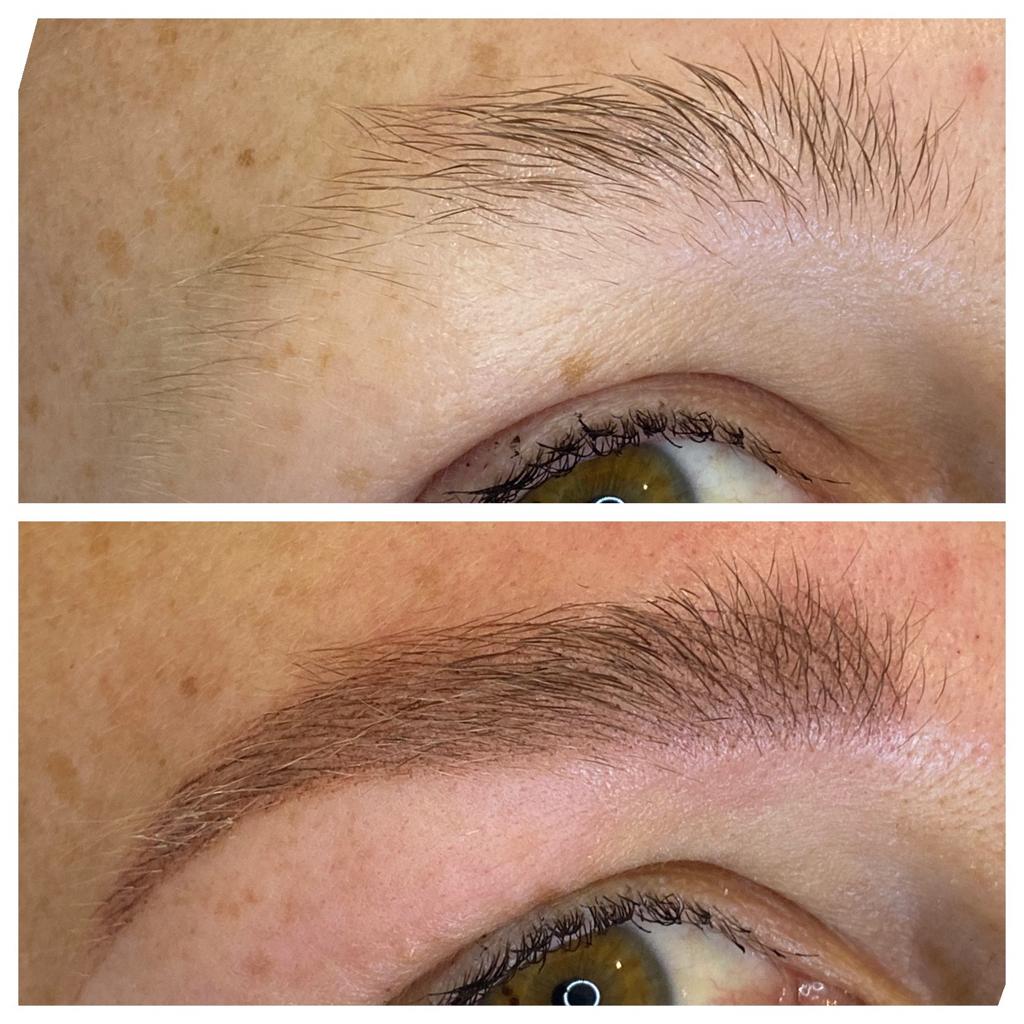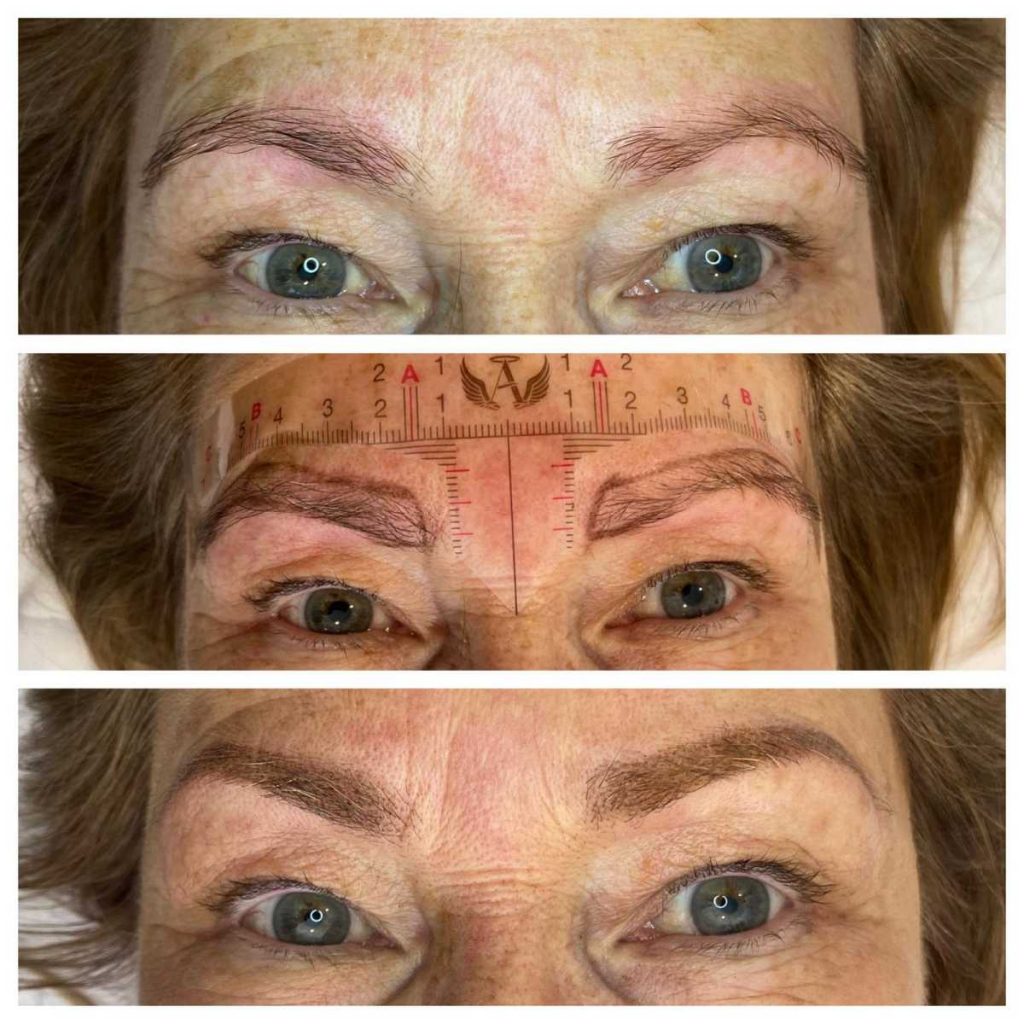Microblading is a popular beauty treatment that uses semi-permanent pigment to give individuals fuller, natural-looking eyebrows. While it offers a great solution for those looking to enhance their brows, microblading isn’t suitable for everyone.
Certain health conditions, medications, and personal circumstances can increase the risks associated with the procedure or affect the healing process. Below, we will explain in detail who should avoid microblading and why.
Let’s get straight to the point
Microblading is not suitable for everyone due to health risks. Pregnant/nursing women, diabetics, those with autoimmune diseases, blood clotting disorders, or prone to keloid scars should avoid the procedure.
People using Accutane, retinol, blood thinners, or with recent Botox/fillers, epilepsy, skin conditions, or undergoing chemotherapy should also steer clear. Allergies to microblading ingredients are another concern.
Always consult with a healthcare provider to assess the risks before undergoing microblading. Prioritising your health is key to ensuring a safe and successful outcome.
1. Pregnant Or Nursing Women
One of the most important groups of people who should avoid microblading is pregnant or breastfeeding women. Microblading pigments, like tattoo pigments, are not strictly regulated by the Food and Drug Administration (FDA). This lack of regulation means there is limited information on whether the pigments are safe for a developing baby or infant.
- Possible pigment transfer: There is a potential, albeit unproven, risk of pigment particles transferring through the placenta or breast milk, which could be harmful to the baby.
- Hormonal changes: Pregnancy and breastfeeding cause significant hormonal changes that may alter the skin’s ability to heal and retain pigment. This can result in uneven or poor outcomes from microblading.
- Risk of infection: While infection is rare with proper aftercare, the immune system is weakened during pregnancy, making it more difficult to fight infections, which could pose risks to both mother and child.
For these reasons, it is recommended that women wait until after they have given birth and completed breastfeeding before considering microblading.
2. People With Autoimmune Diseases
Autoimmune diseases such as lupus, celiac disease, rheumatoid arthritis, Hashimoto’s, and other similar conditions affect the body’s immune response. These diseases, or the medications used to treat them, can impact how the body heals, making microblading a risky procedure.
- Compromised healing process: Since microblading involves making small incisions in the skin, a strong healing response is essential. People with autoimmune diseases often have compromised immune systems, which could slow healing or increase the likelihood of infection.
- Increased risk of flare-ups: Microblading can trigger the immune system, causing flare-ups of autoimmune symptoms, leading to prolonged recovery times and potential complications.
Before undergoing microblading, individuals with autoimmune conditions should seek clearance from their healthcare provider.
3. Diabetics
If you have type 1 or type 2 diabetes, microblading may not be a suitable option unless approved by your doctor. Diabetes, especially when poorly controlled, can interfere with the body’s ability to heal properly.
- Slower healing: High blood sugar levels affect how the body responds to wounds, making the recovery process longer and increasing the risk of infection.
- Increased risk of complications: Diabetic individuals are at a higher risk of developing infections following microblading, which could result in poor retention of pigment or more severe health issues.
It is essential to ensure that blood sugar levels are well-controlled before undergoing any cosmetic procedure, including microblading.
4. People Prone To Keloid Or Hypertrophic Scarring
For individuals who have a history of keloid or hypertrophic scars, microblading poses a significant risk. These types of scars are caused by an overproduction of collagen at the site of an injury, resulting in raised, thick scars that extend beyond the wound area.
- Risk of unsightly scars: Microblading involves creating tiny cuts in the skin, and those prone to keloid scarring may end up with raised scars on their eyebrows, which can be both cosmetically unappealing and difficult to treat.
- Permanent scarring: Even with proper aftercare, keloid scars can develop, leaving individuals with permanent, unwanted marks.
If you are prone to keloid scars, it’s generally advised to avoid microblading, as the risk of scarring outweighs the potential benefits of the procedure.
5. Individuals Taking Blood Thinners Or With Blood Clotting Disorders
Blood-thinning medications such as aspirin, warfarin, and vitamin E can interfere with microblading. Similarly, individuals with blood clotting disorders like hemophilia should avoid the procedure.
- Excessive bleeding: Blood thinners make it difficult for the blood to clot, which can result in prolonged bleeding during and after microblading. Excessive bleeding can also prevent the pigment from being properly absorbed into the skin, leading to poor results.
- Bruising: Individuals taking blood thinners may also experience bruising around the eyebrows, further complicating the healing process and the appearance of the final result.
If you are on blood-thinning medication or have a bleeding disorder, consult with your healthcare provider before considering microblading.
6. People Using Accutane Or Retinol Products
If you have recently been on Accutane or are using retinol-based products, microblading is not advisable.
- Accutane effects: Accutane makes the skin more fragile and susceptible to injury. If you’ve taken Accutane within the last six months, the risk of poor healing or even scarring is significantly increased.
- Retinol thinning the skin: Retinoids (Retin-A, retinol) are commonly used in anti-aging products and can thin the skin, making it more prone to irritation and damage during microblading.
It’s generally recommended to stop using retinol products at least two weeks before your microblading appointment and avoid them for a month after the procedure.
7. Individuals With Skin Conditions
People who suffer from skin conditions such as eczema, psoriasis, or rosacea near the brow area should avoid microblading. These conditions can cause irritation, redness, and inflammation, all of which could interfere with the success of the procedure.
- Unpredictable healing: Skin affected by chronic conditions often heals unpredictably, resulting in patchy or uneven pigment retention.
- Increased irritation: Microblading can exacerbate symptoms, causing flare-ups and discomfort during the healing process.
It’s important to allow these skin conditions to be under control before considering microblading.
8. Epileptics Or Those Prone To Seizures
For individuals with epilepsy or a history of seizures, microblading is not recommended. The procedure involves bright lighting and can cause stress or discomfort, both of which can trigger a seizure.
- Stress and bright lights: Many epilepsy patients are sensitive to bright lights, such as those used during a microblading procedure. Stress can also act as a trigger, increasing the likelihood of a seizure.
- Medication interaction: In some cases, anti-seizure medications may interfere with the healing process, making it more difficult for the skin to recover.
It is essential for individuals with epilepsy to consult with their doctor before scheduling a microblading session.
9. Recent Botox Or Injectable Fillers
If you’ve recently had Botox or dermal fillers, it’s best to wait before getting microblading done. These treatments can alter the shape and appearance of your face, which may impact the placement and final result of microbladed eyebrows.
- Wait 30 days: Most experts recommend waiting at least 30 days after getting Botox or fillers to ensure that the injected substances have fully settled into the skin.
- Distorted results: If you get microblading too soon after injectables, the results may be distorted, leading to an uneven or unnatural look.
Always communicate with your technician about any recent cosmetic treatments before proceeding with microblading.
10. Cancer Patients Undergoing Chemotherapy
Microblading is often sought out by cancer patients who have lost their eyebrow hair during chemotherapy. While it can be a good option for those in recovery, individuals undergoing chemotherapy or radiation should avoid microblading.
- Weakened immune system: Chemotherapy weakens the immune system, making it harder for the body to heal and increasing the risk of infection.
- Consultation with an oncologist: Cancer patients should get approval from their oncologist before pursuing microblading to ensure their health is stable enough for the procedure.
Once chemotherapy is complete and the immune system has recovered, microblading can be considered with a doctor’s clearance.
11. People With Allergies To Microblading Ingredients
Microblading involves the use of numbing agents, pigments, and other substances that may cause allergic reactions in some individuals.
- Lidocaine allergy: Numbing creams containing lidocaine are often applied before the procedure. If you have an allergy to lidocaine, you may experience swelling, irritation, or a more severe reaction.
- Nickel and pigment allergies: Some microblading pigments contain trace amounts of nickel, which can cause hypersensitivity in those with a nickel allergy. Allergies to pigment ingredients can also result in rashes, redness, or other complications.
It is essential to undergo a patch test before the procedure to ensure you do not have any allergic reactions to the ingredients used in microblading.
Conclusion
While microblading can provide beautiful, long-lasting results for enhancing the eyebrows, it is not suitable for everyone. Certain health conditions, medications, and skin sensitivities can significantly increase the risks associated with the procedure, including infection, scarring, and poor healing.
Pregnant and breastfeeding women, individuals with autoimmune diseases, diabetics, and those prone to keloid scarring are among those who should avoid microblading or consult with a healthcare provider first.
Those using blood thinners, Accutane, or retinol products, as well as those with skin conditions, allergies, or recent injectable treatments, should carefully evaluate the procedure’s safety for their circumstances. Ultimately, the most important step is to prioritise your health and seek professional advice before considering microblading to ensure the best and safest outcome.
FAQs About Microblading
Is Cosmetic Tattooing Permanent?
Cosmetic tattooing, or semi-permanent makeup, is a popular treatment that involves the insertion of pigments into the surface of the skin using a fine blade. Areas that can be tattooed are the lips, eyebrows and eye line.
Is It Better To Tattoo Eyebrows Or Microblade?
Microblading creates a more natural end result compared to eyebrow tattooing, which results in brows that appear “drawn on” and flat. This is because the microblading technique creates individual hair-like strokes that are identical to hair growth pattern of the surrounding eyebrow hair.
What Are The Negatives To Microblading?
Apart from being an expensive method, makeup removal is quite painful and can lead to scarification. Also, in many cases, allergic skin reactions are a possibility; it is the microblading side effects. The numbing cream and the ink used might not be favorable to all skin types.
How Is Cosmetic Tattooing Done?
The cosmetic tattoo procedure involves depositing pigment into the skin, using a small pen-style machine which rapidly inserts small quantities of the appropriate colour pigment progressively in the required area with the expertise of a competent and skilled professional.
What Does A Cosmetic Tattooist Do?
With a small purpose-made cosmetic tattoo hand-held implanter. An advanced practitioner will utilise more than one implanting machine and variable needles appropriate to the clients individual needs. The depth of the pigment deposited is carefully and expertly regulated, making the procedure safe and controlled.



